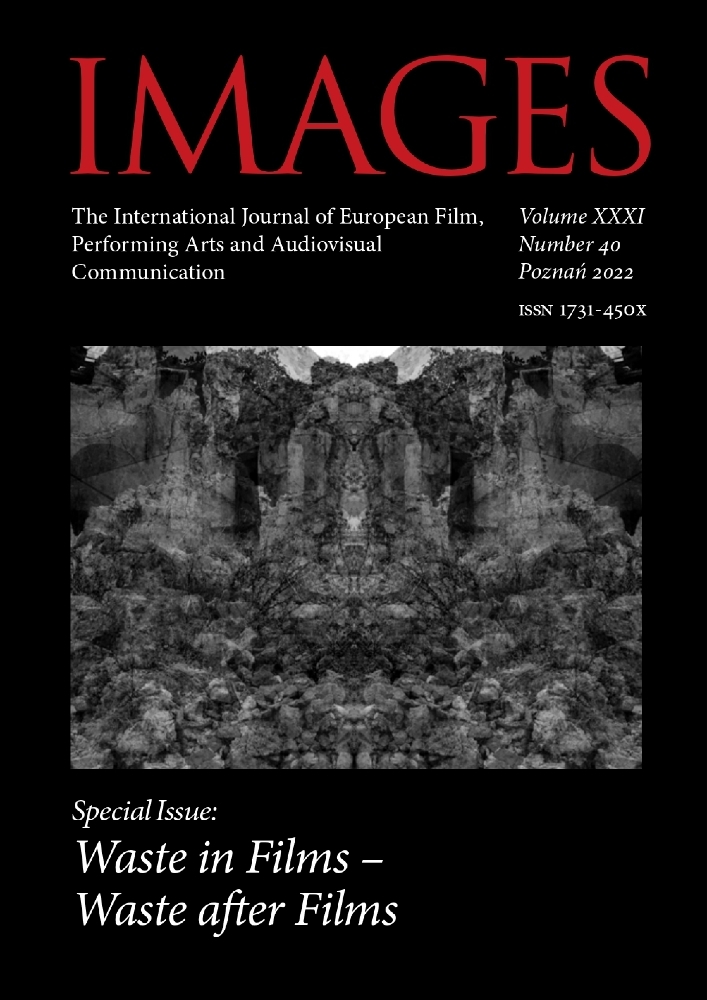Abstrakt
The article explores the concept of studio filmmaking in the context of early Hollywood and a new incarnation of studio filmmaking in the age of digital visual effects. The author analyses the old studio era in terms of shaping the cinematic image (primarily compositing) and the meaning of the studio, understood as an atelier. Kalbarczyk argues that originally the final look of the film used to be achieved by blending all the shot elements in the physical space of the studio, while nowadays the final form is most often created in a virtual space, deepening the decentralization of the filmmaking process. The author argues that more than the atelier space, the new studio filmmaking concept would refer to the holistic way of thinking about cinema as a heterogeneous structure, not so much attained integrally through filming, but carefully constructed. Various dimensions of studio filmmaking are discussed using the following films: Sunrise: A Song of Two Humans (1927), Citizen Kane (1941), Everest (2015) and Avengers: Endgame (2019).
Bibliografia
Bordwell D., Staiger, J., Thompson, K., The classical Hollywood Cinema: Film Style & Mode of Production to 1960, New York 2005
Fischer L., Sunrise: A song of Two Humans (BFI Film Classics), London 1998 https://doi.org/10.5040/9781838712426 DOI: https://doi.org/10.5040/9781838712426
Gleich J., Webb L., Introduction, [w:] Hollywood in Location. An Industry History, red. J. Gleich, L. Webb, New Brunswick - New Jersey 2019, s. 1-15 https://doi.org/10.36019/9780813586281-001 DOI: https://doi.org/10.36019/9780813586281-001
Goldsmith B., O'Regan T., The Film Studio: Film Production in the Global Economy, Lanham - Boulder - New York - Toronto - Oxford 2005
Groundbreaking Led Stage Production Technology Created Hit for Lucasfilm Series "The Mandalorian", Industrial Light & Magic, <https://www.ilm.com/groundbreaking-led-stage-production-technology-created-for-hit-lucasfilm-series-the-mandalorian/>, dostęp: 18.09.2022
Gunning T., Moving Away From Index: Cinema and the Impression of Reality, "differences" 2007, vol. 18(1), s. 29-52 https://doi.org/10.1215/10407391-2006-022 DOI: https://doi.org/10.1215/10407391-2006-022
Gwóźdź A., Narodziny kina z ducha triku, "Kwartalnik Filmowy" 2017, nr 99, s. 6-18
Lewicki A., Prawdziwy koniec klasycznego Hollywoodu. Kino amerykańskie w latach sześćdziesiątych, [w:] Kino epoki nowofalowej, red. T. Lubelski, I. Sowińska, R. Syska, Kraków 2015, s. 305-343
Loew K., Magic mirrors: The Schüfftan process, [w:] Special Effects: New Histories/Theories/Contexts, red. D. North, B. Rehak, M.S. Duffy, London - New York 2015, s. 62-79 https://doi.org/10.1007/978-1-84457-904-4_5 DOI: https://doi.org/10.1007/978-1-84457-904-4_5
North D., Performing Illusions: Cinema, Special Effects and the Virtual Actor, London - New York 2008
North D., The Silent Screen, 1895-1927: Special/Visual Effects, [w:] Editing and Special/Visual Effects, red. Ch. Keil, K. Whissel, New Brunswick - New Jersey 2016, s. 37-50 https://doi.org/10.36019/9780813570839-003 DOI: https://doi.org/10.36019/9780813570839-003
North D., Rehak B., Duffy M.S., Introduction, [w:] Special Effects: New Histories/Theories/Contexts, red. D. North, B. Rehak, M.S. Duffy, London - New York 2015, s. 1-13 https://doi.org/10.1007/978-1-84457-904-4_1 DOI: https://doi.org/10.1007/978-1-84457-904-4_1
Prince S., Digital Cinema, New Brunswick - New Jersey 2019
Prince S., Digital Visual Effects in Cinema: The Seduction of Reality, New Brunswick - New Jersey - London 2012
Prince S., True Lies: Perceptual Realism, Digital Images, and Film Theory, "Film Quarterly" 1996, nr 49(3), s. 27-37 https://doi.org/10.2307/1213468 DOI: https://doi.org/10.2307/1213468
Stasieńko J., Ciało biologiczne vs. ciało ekranowe. Dynamika napięć w kinie efektów specjalnych, "Kwartalnik Filmowy" 2017, nr 99, s. 143-160
Turnock J.A., Plastic Reality: Special Effects, Technology, and the Emergence of 1970s Blockbuster Aesthetics, New York 2015 https://doi.org/10.7312/columbia/9780231163538.001.0001 DOI: https://doi.org/10.7312/columbia/9780231163538.001.0001
Weiner J., David Fincher's Impossible Eye, "New York Times", 19 listopada 2020, <https://www.nytimes.com/2020/11/19/magazine/david-fincher-mank-interview.html>, dostęp: 18.09.2022
Licencja
Prawa autorskie (c) 2023 Kamil Kalbarczyk

Utwór dostępny jest na licencji Creative Commons Uznanie autorstwa 4.0 Międzynarodowe.

